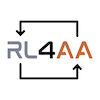Speaker
Description
The photon pulse intensity is one of the key performance metrics of Free Electron Laser (FEL) facilities and has a direct impact on their experimental yield. To date, FEL intensity tuning is a time-consuming manual task that requires expert human operators to have significant skill and experience. Autonomous tuning methods have been demonstrated to reduce setup times and improve the attained working points on other tuning tasks, but existing numerical optimisation algorithms struggle with the high dimensionality and complexity of FEL intensity maximisation. Reinforcement learning-trained optimisers (RLOs) promise the capabilities to successfully be applied to even such complex tuning tasks, but their requirement for training interactions makes online training infeasible. Offline training in simulation has previously been proposed as an effective solution, but FEL simulations are prohibitively complex and slow for use in RLO training. We propose the coupling of novel high-speed differentiable beam dynamics simulations with modular neural network surrogates to address this issue at the example of tuning the FEL intensity at LCLS. Not only have similar approaches been shown to reduce the wall-time required for training by orders of magnitude, making training for FEL tuning feasible, but the availability of gradients also promises an avenue for profoundly reducing the number of required training samples through gradient-based reinforcement learning.

